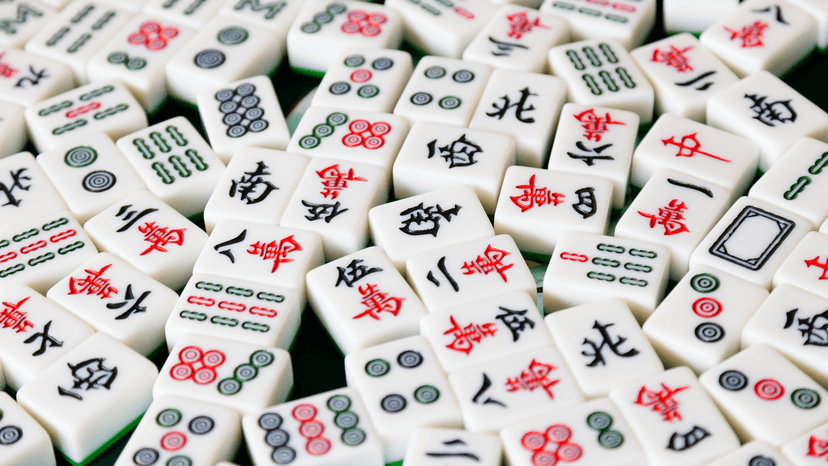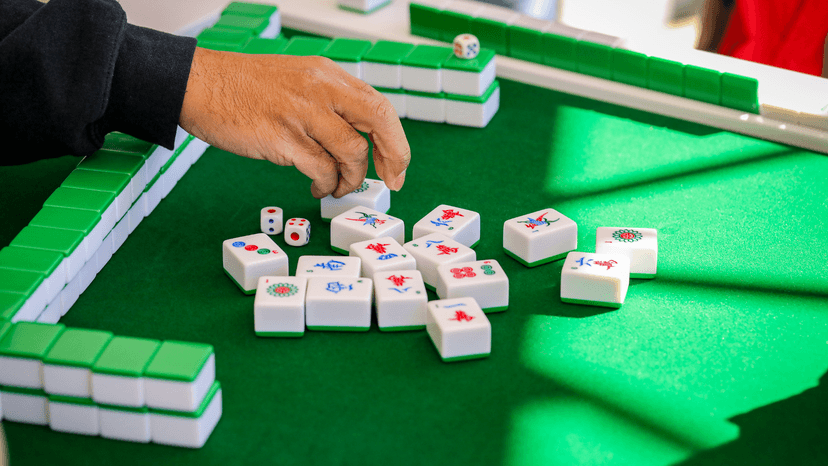Mahjong Tips and Tricks - Things To Remember

Mahjong isn't just a game of pure luck; it requires players to learn the rules and develop strategies. But there's another critical element most players overlook. Once you've mastered how to play Mahjong, the next vital step is to understand all the major tips and tricks.
In this guide, we'll share the Mahjong tips and tricks we know, so you don't have to stress. Let's get started right away without wasting any time.
Start The Game With A Plan
Players should have a plan before playing the Mahjong game.As soon as you see a tile, start thinking about how to proceed. The ideal first step is to decide which tiles to pick up, which ones to wait for, and which to discard.
- Remember that your rivals are constantly watching what you discard.
- For most seasoned Mahjong players, the discarded tiles give them a solid sense of what's in their hand, allowing them to plot their strategy. Skilled players can exploit your discards to their advantage.
- Be aware that bluffing might not always pay off, as it can reveal too much about your hand to opponents.
Memorising the Tiles
You can't search for melds if you're unsure which characters go together. If you're not familiar with Chinese characters, this can be quite challenging. Consider getting a Mahjong tile set with Arabic numerals. Besides the standard symbols on Mahjong tiles, these Arabic numerals mean you won't have to learn traditional Chinese calligraphy to find your tiles.
Skipping the First Throw
Skipping the first discard is a smart Mahjong strategy because it doesn't give away your plan to opponents, helping you get ahead early in the game.
The downside is that it might reveal your Mahjong winning strategy for that round. If opponents are motivated to win, they'll know your game plan. Even if you could have won a set with that discard, they'll become cautious with their throws going forward, preventing you from winning another set.
- Discarding the first tile might suggest you're still learning the game, and opponents could use this against you.
- Don't fret too much about not getting the leftovers. You're free to discard them.
- In Mahjong, players may use a variety of tiles; they simply need to wait for the right moment to assemble a strong hand that will guarantee victory.
Skipping the Gaps
Avoiding gaps between the tiles when arranging the rack is one of the best mahjong tip methods. Because mahjong players are very perceptive, maintaining gaps might reveal a player’s strategy. They are able to quickly identify the hand a player is attempting to put up and their potential actions.
To line up their tiles in combinations and determine their next movements, some new players would create a gap. Yet, it also implies that other players can use their hands similarly. Placing tiles that are not connected and leaving gaps might confuse opponents. But, doing so is only advised when a player is certain they won't become perplexed by their own tactics.
Appropriate Scoring
For new players, it is better to keep the scoring as simple as possible. If not, it could mess up their game, and they might not be able to win. The easiest approach to scoring the game is to award one point to the person who completes the first mahjong, and zero points to everyone else. Add up the points, and the one who wins the most games is declared the winner.
Players can use the other Mahjong scoring guidelines if they have a better grasp of the game. The regulations of the Chinese Official Mahjong Competition are similar to many of them. After that, they can experiment with more challenging scoring systems, such as those for Hong Kong or Ricchi Mahjong.
Point Values of The Tiles
It's also a good idea to remember that pongs have a higher point value than chows. Chows are only useful when there are four of them available to form a mahjong. Yet, making pongs rather than chows may seem counter-intuitive, particularly if a player has experience of playing poker.
- Pong is equivalent to a three-of-a-kind in poker, while chow is nearly identical to a straight.
- While chows are valued more in poker, a player could be inclined to concentrate on them, but mahjong games have distinct hand rankings.
- If new mahjong players learn the various meld combinations and take into account the point values for each, they will make fewer mistakes and advance more quickly.
Hiding the Melds
A player will get more points by keeping the melds a secret until they are prepared to declare mahjong. Therefore, they shouldn't reveal them until absolutely necessary. Mahjong beginners frequently like moving their tiles around to observe which melds they are effectively working on. Players are free to move their tiles about, but they should try to keep them all in a row.
- It is simple for the adversaries to see what a player is working on when full melds are separated, or certain tiles are set aside, so they will modify their mahjong strategy appropriately.
- A player becomes a more difficult mahjong opponent to play against by maintaining a straight row of tiles.
Discarding the Tiles
Although it may be tempting, it is not a good idea to discard any tiles a player has in their hand that don't fit. Instead, a player should focus on the tiles that their rivals are tossing away.
When a player pays close attention to the discard pile, they increase their chances of finding the discards they require and decrease their chances of accidentally discarding them into another player's mahjong hand.
What would be the wisest course of action if a player had many tiles to discard? If you are certain that your opponents won't desire them, it would be best to discard the tile that is most near other tiles that have previously been discarded.
Sticking To A Pair
A pair is a hand that every player should keep close. These are among the most adaptable tiles. A player can adhere to them as pairs or use them to form a four-of-a-kind (Kong), a three-of-a-kind (Pung), or a group of three identical tiles (Chow).
- Don't try to shatter them if they have a pair or two for this reason. In reality, when a player advances in the game, they can turn out to be their winning tiles.
- It's important for a player to promptly implement their mahjong-winning techniques.
Conclusion
To learn mahjong completely, there are some tips and tricks that a player must remember. Without them, a player would never be complete with other players, as many of them observe the game and figure out others’ strategies as well.
FAQ
Are there effective strategies for Mahjong?
Indeed, there are several effective strategies in Mahjong. Some of these include:
- Starting the game with a clear plan
- Memorizing the tiles as they are played
- Carefully considering the first throw
- Focusing on building your foundation
What is the key to winning at Mahjong?
While there's no single 'secret' to winning at Mahjong, successful players consistently guide their hand in the desired direction while remaining adaptable. Simply picking up tiles without a clear purpose is often counterproductive; patience and strategic foresight will ultimately lead to better outcomes.
What is considered the strongest hand in Mahjong?
The strongest standard hand in Mahjong typically consists of four sets (which can be chow, pung, or kong) and a single pair.
Is it possible to win with 7 pairs in Mahjong?
Winning with 7 pairs in Mahjong is indeed possible, but it presents limited odds as there are typically only 3 ways to win in a one-sided wait. Furthermore, to achieve the 7 pairings, a player is generally not permitted to take any tiles discarded by other players.
What is the '13 Wonders' hand in Mahjong?
The '13 Wonders' (also known as Thirteen Orphans) is widely regarded as the most exceptional final hand in Mahjong. Players have a rare 1 in 2464 chance of achieving this highly coveted hand.
Are 4 jokers permissible in Mahjong?
Yes, an exposed pung, kong, or quint can be played with one or more jokers. However, players are generally not allowed to pick up a discarded tile for a single or a pair, unless it is the very last tile needed to declare Mahjong.







